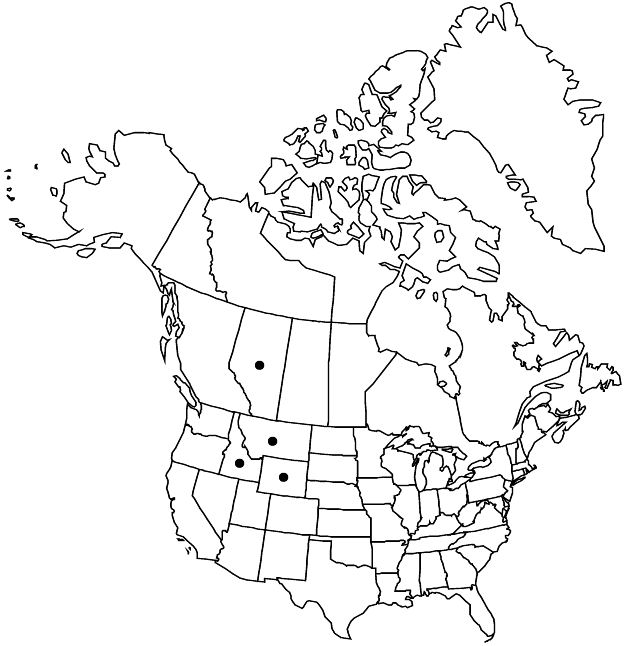Drymocallis pseudorupestris var. pseudorupestris
Stems (1–)2–4 dm, base (1.5–)2–3 mm diam., short hairs usually absent or sparse, sometimes moderately abundant. Basal leaves (4–)7–16 cm, sparsely to moderately hairy (hairs to 1 mm), peglike-glandular, not bristly; leaflet pairs (2–)3(–4); terminal leaflet broadly obovate, (1–)2–3(–4) × 1.5–3 cm, teeth usually double, (5–)8–15 per side. Pedicels 5–20 (proximal to 40) mm, not bristly, short hairs sparse to moderately abundant. Flowers (5–)10–40; hypanthia and sepals not bristly; epicalyx bractlets linear to elliptic, 3–6 × 1–2 mm; sepals 5–7(–9) mm; petals widely overlapping, not red-tinged, broadly obovate, 6–12 × 5–11 mm; filaments 2–4 mm; styles light reddish brown.
Phenology: Flowering May–Aug.
Habitat: Rocky areas, exposed slopes, grasslands on bluffs
Elevation: 1000–2900 m
Distribution

Alta., Idaho, Mont., Wyo.
Discussion
Variety pseudorupestris is the tall, large-flowered extreme centered in the northern Rocky Mountains in Montana, extending into Alberta and to the Wind River Range in Wyoming. Some collections from northern Idaho are also tentatively included here. Unlike the other varieties, var. pseudorupestris occurs in grasslands as well as in more rocky habitats. It may intergrade with Drymocallis fissa, though petal color and leaflet number are usually distinct.
Selected References
None.